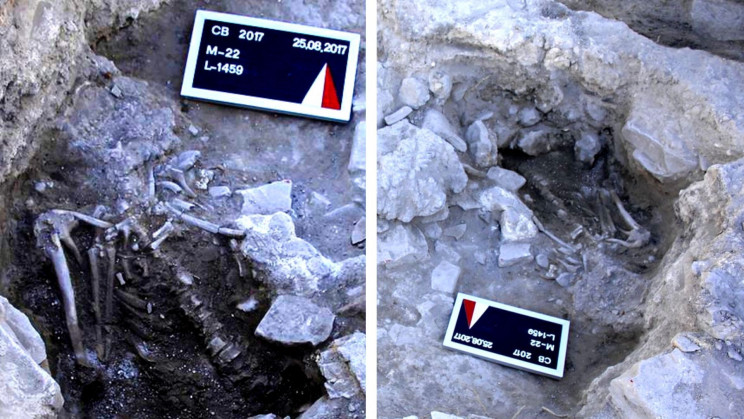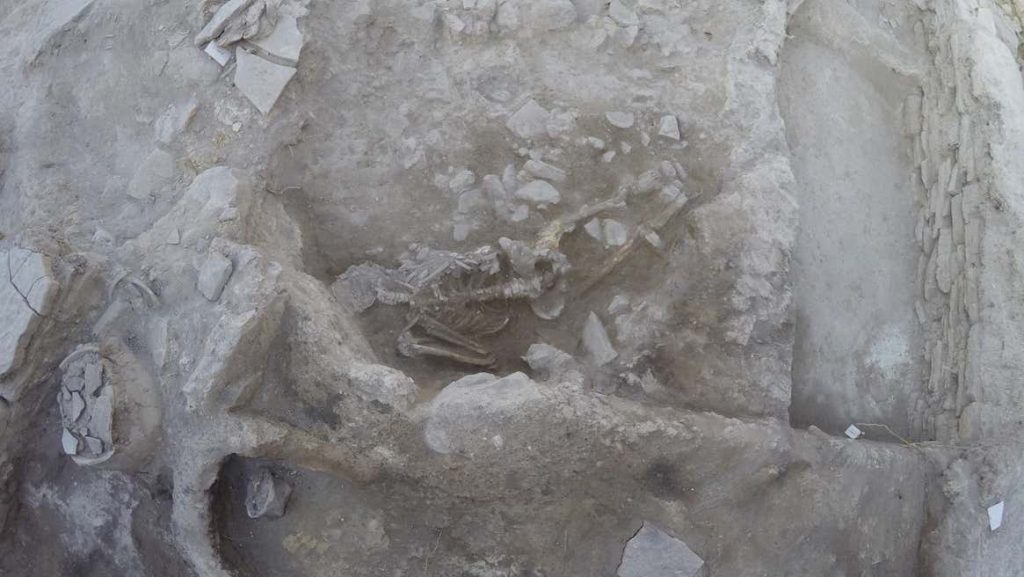A remarkable “time capsule” from one of the most devastating volcanic disasters in human history has been discovered on the Turkish coast, providing new compelling evidence of the cataclysmic event and possibly the very first physical remains of one of the tens of thousands of people who likely suffered and died.
A team of archaeologists and geoscientists recently discovered victims of an ancient tsunami off the coast of Turkey. The victims, a human guy and a canine were most likely murdered in the aftermath of a massive volcanic eruption 3,600 years ago.

The eruption occurred in 1620 BCE on the island of Santorini at the Thera volcano. The eruption demolished much of Santorini; the island that survived is now a major tourist attraction. In addition, the eruption caused havoc on the Mediterranean, sending a massive tsunami outwards from the island and blanketing the region with ash.
According to the research published in the Proceedings of the National Academy of Sciences, the two skeletons were discovered at e?me-Balararas, a town on the Turkish coast occupied from the mid-third millennium BCE until the 13th century BCE. Previously, archaeologists discovered Late Bronze Age objects at the site. However, ash and tephra have lately been found at the site. The volcanic material in Turkey was traced back to the Santorini eruption, according to the researchers.
“The impact of this eruption and the tsunamis it created were much stronger, and reached more regions than suggested before,” study co-authors Beverly Goodman, a marine geoarchaeologist at the University of Haifa in Israel, and Vas?f ?aho?lu, a maritime archaeologist at the University of Ankara in Turkey, said in a statement.
“Çe?me-Ba?lararas? is the northernmost site with tsunami deposits so far investigated, and is unique in that it is a site with very clear cultural and commercial maritime contacts with the Minoan World.”

In addition to the volcanic material and human remains, the researchers also discovered shells and urchins at the site. They found a structure with a collapsed inward wall; it appeared that black, silty sediment had washed through the wall, causing it to collapse.
The materials appeared to be coming in from a single direction, leading the researchers to believe an earthquake did not cause it. The research team is unsure whether the healthy young man, possibly a teenager—died amid the tsunami debris from drowning, blunt force trauma, or asphyxia. They are, however, actively looking into the matter.
“This research—we think—will be an eye-opener for scientists working in the Aegean especially. For decades the primary focus of research on the Theran eruption mainly focused on the dating issue or the impact and the nature of the eruption itself, the ash distribution, along with the tsunamis it generated.” Goodman and ?aho?lu said.
“However, only a handful of sites have been reported with tsunami deposits and none of them with human victims. This lack of human victims has been an enigma that has left a real knowledge gap regarding the human experience associated with the event,” they added.

The research’s most useful components are nine new radiocarbon ages derived from various items on the site. The chronology of the Thera eruption is still debated; some believe it occurred around 1530 BCE or 1620 BCE. Based on the tree rings of timber used in an ancient Phrygian tomb, a team of dendrochronologists dated the eruption to 1560 BCE. The e?me-Balararas dates show that the deposits cannot be older than 1612 BCE, therefore restricting the Thera eruption dates even more.
However, the skeletons’ ages will help assess whether or not they were victims of the Thera tragedy.
More intriguing information will undoubtedly emerge from e?me-Balararas and the individuals—both human and canine—who died there. Perhaps additional northern sites demonstrating the scale of Thera’s devastation will appear in due course.


